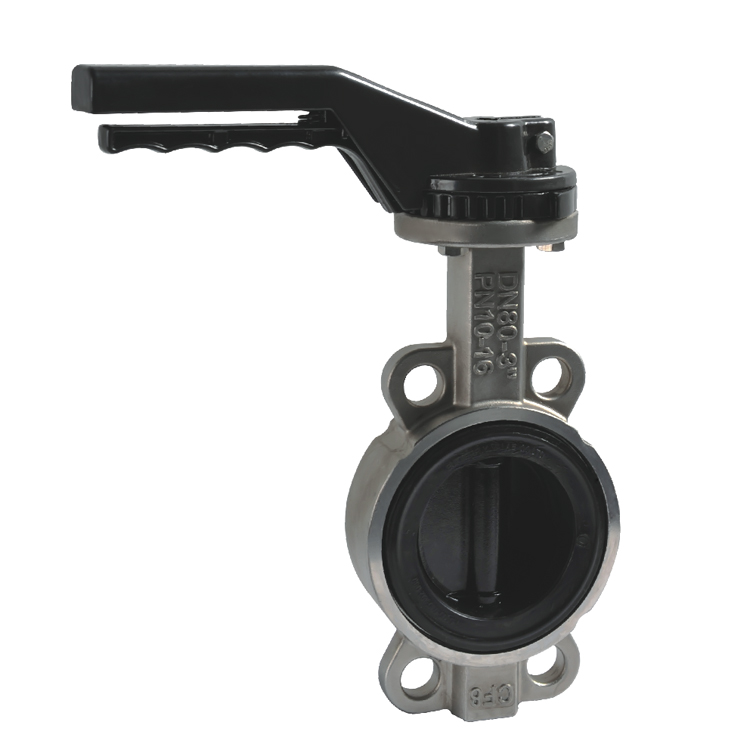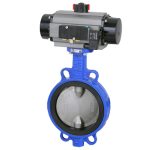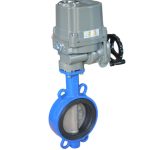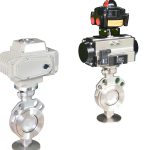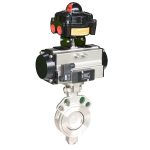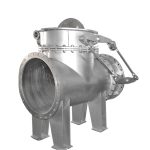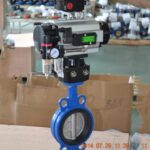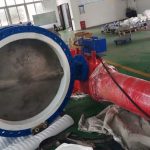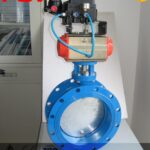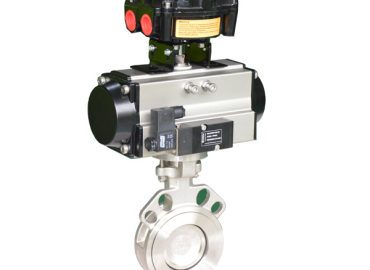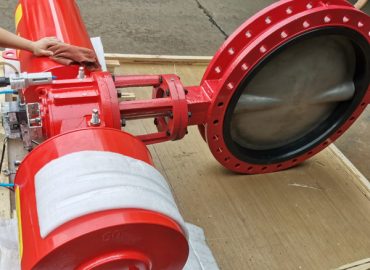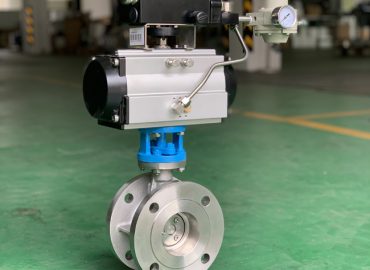Butterfly valves are essential components in various industries, including oil and gas, pharmaceuticals, water treatment, and many others. They play a crucial role in regulating the flow of fluids in piping systems, and their efficient operation is essential for the smooth production process. Regular inspection of butterfly valve maintenance is crucial to ensure their proper functioning and prevent potential failures, which can lead to significant losses in terms of equipment damage and personnel safety. In this blog post, we will discuss the importance of inspecting butterfly valves and the factors that determine their inspection frequency. We will provide guidelines for inspection schedules, methods of inspection, and industry-specific regulations and standards to help you maintain your butterfly valves in optimal condition.
Introduction
Welcome to this blog post, where we delve into the importance of inspecting butterfly valve maintenance and how often they should be inspected. Butterfly valves are integral to the operation of numerous industries and have a vital role in regulating the flow of fluids in piping systems. A malfunctioning or poorly maintained butterfly valve can result in significant losses in terms of equipment damage, production delays, and even personnel safety. By conducting regular inspections of your butterfly valves, you can ensure that they are in good working condition, and minimize the risks of costly downtime and equipment failure. In the following sections, we will explore the factors that determine inspection frequency, inspection procedures, and guidelines for inspection schedules – all aimed at helping you maintain optimal conditions for your butterfly valves.
Explanation of butterfly valves
A butterfly valve is a type of pipe valve used for regulating and isolating fluid flow. It consists of a rotating disk or plate and a shaft positioned at the center of the disk. When the valve is open, the disk rotates to allow fluid flow, and when closed, the disk’s position blocks the flow of fluid. Butterfly valves are categorized into two types: lug- and wafer-style butterfly valves. Lug-style valves are bolted to the pipe flanges from each side, and wafer-style valves are installed between two pipe flanges using bolts and nuts. Butterfly valves are generally used in applications where low-cost, lightweight, and quick on-off operations are required. However, proper maintenance and inspection of the valves are necessary to ensure their proper functioning, prevent failure, and extend their lifespan.
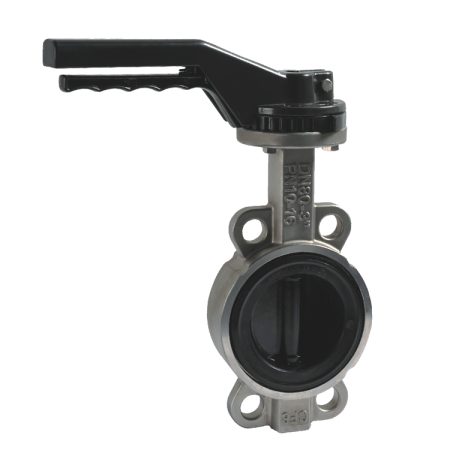
Importance of maintaining butterfly valves
Maintaining butterfly valves properly is critical to ensuring optimal valve performance, preventing equipment failure, and minimizing the risk of accidents. Improper valve maintenance can lead to leakage, corrosion, erosion, and other issues that can result in equipment damage and downtime. Ensuring regular inspection and maintenance of butterfly valves can help identify potential problems early and prevent more severe issues in the future. Preventive maintenance measures such as cleaning, lubrication, and adjustments can extend the valve’s service life, lower the risk of failure, and reduce the cost of repairs or replacement. Proper maintenance of butterfly valves enhances their reliability and performance, enabling efficient flow control, minimizing leaks, and reducing the risk of downtime.
Why inspections are necessary
Inspections are necessary to ensure that butterfly valves are in proper working order, prevent unexpected failure, and maximize the valve’s service life. Over time, butterfly valves are exposed to various elements such as harsh chemicals, high temperatures, and high-pressure environments that can lead to erosion or corrosion. Regular inspections can help identify these issues and determine the appropriate repairs or replacement of the parts. In addition, inspections are required for many industries to maintain regulatory compliance and to ensure personnel safety. Inspections help in identifying potential safety risks that may endanger the environment, personnel or cause equipment failures. Therefore, conducting regular inspections is a necessary investment to ensure continued safe and efficient operations and minimize the risk of equipment failures or accidents.
Butterfly valve operation basics
Butterfly valve maintenance operation is fairly straightforward. When the valve is open, the disk rotates perpendicular to the direction of flow to allow fluid to flow through the valve body. When the valve is closed, the disk rotates parallel to the flow direction to block the flow of fluid. The disk is connected to the valve stem that extends outside the valve body, allowing the control system or operator to actuate the valve. Butterfly valves are operated by manual actuators, electric actuators, or pneumatic actuators, depending on the application’s requirements. In a pneumatic actuator, compressed air is used to operate the valve, while electric actuators use electricity to open or close the valve. The correct valve operation is crucial to ensure efficient flow control, prevent leaks, and extend the valve’s service life.
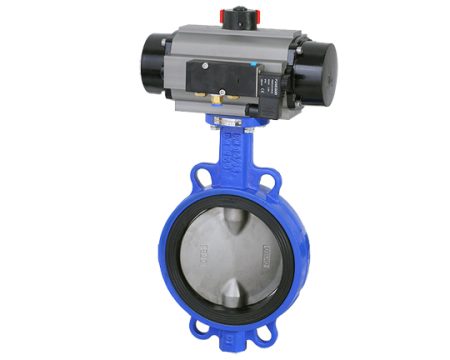
Common issues that cause breakdown
Several factors can lead to butterfly valve breakdown, including regular wear and tear, environmental conditions, fluid characteristics, and maintenance issues. Wear and tear over time can cause the valve seats, seals or gaskets to degrade, leading to leakage or inability to close the valve. Environmental conditions such as exposure to extreme temperature, pressure, or corrosive chemicals can cause erosion, corrosion, or scaling on valve components, causing them to fail. Additionally, the fluid characteristics such as location, type of fluid, pH, and temperature can affect the valve’s mechanical components, causing them to malfunction. Poor maintenance practices such as not keeping the valve clean, lubricating the valve stem, and lack of timely repair or replacement can also contribute to valve breakdown. It is crucial to conduct regular inspections and maintenance practices to address issues before they lead to breakdowns, reduce the risk of downtime, and maximize the valve’s service life.
Corrosion
Corrosion is one of the most significant factors that can lead to wafer butterfly valve breakdown. Corrosion happens when a material reacts with its environment, leading to degradation of the metal, resulting in cracks, corrosion, and general weakening. Butterfly valves that are exposed to harsh and corrosive environments such as marine and chemical applications are more susceptible to corrosion. Different types of corrosion can occur, such as galvanic corrosion, which results from an electrolytic reaction between two dissimilar metals, leading to metal loss. Pitting corrosion causes small holes on the metal surface, leading to a weakening of the metal. General corrosion happens when the metal surface degrades uniformly over time, resulting in a loss of thickness. Regular inspections and installation of anti-corrosion coatings and materials can mitigate the effects of corrosion, extend the valve’s service life, and maintain its proper functioning.
Wear and tear
Wear and tear are another common issue that can cause butterfly valve breakdown. Butterfly valves consist of many moving parts that require regular maintenance to maintain proper functioning. Over time, the valve disk, shaft, seals, and gaskets can wear out, leading to leakage or inability to close the valve tightly. The discs and seats may require periodic adjustments or replacement to ensure proper seating and uninterrupted flow control. Loose or damaged components can lead to severe damage or binding, necessitating costly repairs or replacement of the valve. Ensuring that butterfly valves are regularly inspected and serviced can prevent wear and tear issues, extend their lifespan, and ensure optimal performance. Proper lubrication, cleaning, and calibration can also help prevent damages from wear and tear.
Poor installation
Poor installation is another factor that can cause butterfly valve breakdown. Butterfly valves must be installed correctly, following the manufacturer’s instructions and industry-specific standards. Incorrect installation can lead to improper alignment of the valve, leaks, and other issues that can impact the valve’s performance. Additionally, the use of incorrect or low-quality pipe flanges and gaskets, or lack of proper alignment of the mating flanges, can cause leaks that may result in downtime or equipment damage. Poor installation practices can also impact the valve’s durability, causing premature failure and frequent repairs. By ensuring that butterfly valves are installed correctly, using high-quality materials, and following the recommended industry-specific practices, you can prevent poor installation-related breakdowns, reduce maintenance costs, and extend the service life of the valves.
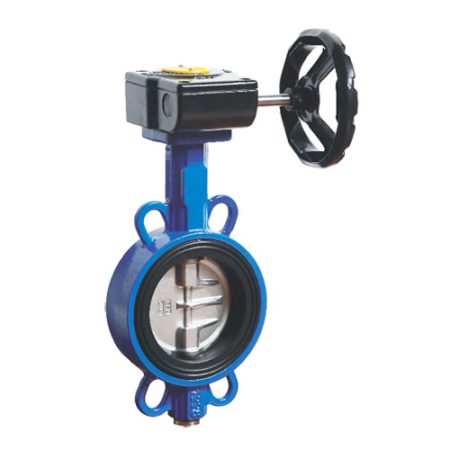
How often should butterfly valves be inspected?
The frequency of butterfly valve inspections depends on several factors, including valve type, environment, fluid, and valve usage. As a general guideline, butterfly valves should be inspected at least once a year to ensure proper functioning, longer lifespan, and prevent issues that arise from regular use. However, certain applications may require more frequent inspections, such as high-pressure environments, extremely corrosive fluids, or critical applications where the valve’s failure can cause severe damage. Between inspections, it is also essential to monitor and record the valve’s performance periodically for any deviations from the baseline. By conducting timely inspections and maintenance, you can catch problems early on and prevent costly equipment damage, downtime, and hazards to personnel.
Industry standards
Industry standards for butterfly valve maintenance and inspection vary depending on the industry and the application. However, many standards recommend regular maintenance and inspection to ensure optimal valve performance and a safe working environment. The most comprehensive standard for butterfly valves is the American Petroleum Institute (API) standard 609 that outlines the design, manufacturing, testing, and maintenance practices for butterfly valves used in the industry. The International Organization for Standardization (ISO) also has several standards related to butterfly valves that provide guidelines for their care and reliability. Additionally, many industries such as the chemical, oil and gas, and water treatment, have their own specifications and standards for the maintenance and inspection of butterfly valves. It is essential to follow industry best practices and applicable standards to ensure proper functioning, minimize risks, and extend the service life of your butterfly valves.
API6D and DNVGL
API6D and DNVGL are standards that are frequently used in the oil and gas industry for the manufacturing, testing, and inspection of valves. API6D outlines the specifications for pipeline valves, including butterfly valves, and provides guidelines for pressure ratings, end connections, testing, and inspection requirements. DNVGL is a set of international standards for quality management, safety, environmental protection, and risk management. The standards cover a wide range of industries, including the oil and gas sector, and include guidelines for the design, construction, installation, and maintenance of offshore and onshore assets. Complying with API6D and DNVGL standards ensures that butterfly valves used in the oil and gas industry are safe, reliable, and meet the regulatory and environmental requirements. These standards help improve the safety and efficiency of the industry, reduce risks of equipment damage, and prevent downtime or accidents.
Inspection frequency parameters
Inspection frequency parameters for butterfly valves depend on several factors, including the application, environmental conditions, and valve type. These factors impact the valve’s service life and can affect the need for inspection. Regular inspection every one to two years is usually recommended for butterfly valves, but severe or critical applications may require more frequent inspections. Valve manufacturers often recommend inspection guidelines tailored to their products or make recommendations for inspection based on industry-specific standards. Moreover, onsite valve performance data or valve monitoring systems may provide insights into when inspection may be necessary. The goal is to catch any potential valve issues early through proactive and preventative measures, such as regular valve maintenance, to avoid unexpected equipment failures or damages while ensuring valve reliability, longevity, and uninterrupted operations.
Time-based inspection
Time-based inspection refers to a maintenance approach where the interval between inspections is set based on a predetermined timeframe. This method is commonly used in industries where the equipment operates in harsh or demanding environments and undergoes frequent wear and tear. For butterfly valves, time-based inspection may be necessary due to factors such as fluid composition, pressure, and temperature, which affect the valve’s components’ lifespan. Time-based inspection frequency may vary depending on several factors, including the valve type, operating conditions, and maintenance history. However, frequent inspection intervals may lead to downtime and unnecessary maintenance costs. By working with valve manufacturers to establish an optimal inspection frequency based on the valve’s condition and operating history, it is possible to minimize maintenance expenses and limit downtime while ensuring proper valve functioning.
Operation hours-based inspection
Operation hours-based inspection is a maintenance approach where the inspection interval is set depending on the number of working hours or cycles that the equipment has operated. This maintenance method is applicable chiefly to butterfly valves used in industries where they operate continuously or for extended periods, such as oil and gas, chemical processing, and water treatment. Monitoring hours-based inspection enables the maintenance team to plan maintenance tasks more efficiently and cost-effectively. The advantage of using this method is that it accurately fixes the timing of maintenance tasks, thus minimizing downtime while ensuring that the equipment remains well-maintained. By establishing an optimal inspection interval for butterfly valves based on hours or cycles of operation, operators can avoid unexpected failures, extend the lifespan of the equipment, and ensure that the valve delivers reliable performance.
Risk-based inspection
Risk-based inspection (RBI) is a maintenance approach used to determine the optimal inspection intervals based on the risk posed by a particular piece of equipment or part. RBI is typically used in risk-sensitive industries or environments where equipment failure can result in potential risks and significant consequences. In the case of butterfly valves, RBI involves assessing the valve’s condition, identifying potential failure modes, and prioritizing inspection based on the risk of failure. Factors such as environmental conditions, fluid composition, pressure, and temperature, are used to identify and assess risks. RBI takes into account the cost, consequences of failure, and other factors such as equipment criticality to determine optimal inspection intervals. Applying a risk-based inspection approach reduces unnecessary maintenance tasks, extends equipment lifespan, and minimizes downtime. By accurately identifying risks, the optimal inspection frequency can be determined, and the maintenance team can focus on the highest priority tasks.
What should be done during inspections?
During a butterfly valve inspection, several critical components should be checked to ensure proper functioning and avoid potential failures. The valve’s exterior, including the body, disc shaft, and sealing components, should be checked for signs of corrosion, wear, or damage. The condition of the valve’s interior components such as the disc, stem, seat, and seals should be inspected for signs of wear and tear, leakage, and proper functioning. The valve’s fasteners and bolts should be inspected for tightness and integrity. Additionally, the valve’s actuator and all interconnected components should be inspected and tested to ensure proper functioning. Valve inspection data should be logged, analyzed, compared to previous records, and evaluated by experienced personnel to identify trends and recognize potential issues proactively. The inspection team should be familiar with the valve’s operational requirements, the industry-specific regulations, and the manufacturer’s documentation and recommendations to ensure comprehensive and effective inspection. Regular inspection and maintenance tasks, when done correctly, can improve valve performance, reduce operating costs, and extend the valve’s service life.
Critical inspection points
Several critical inspection points should be checked during a butterfly valve inspection to ensure optimal performance and extend its service life. The valve’s body and internal components, including the disc, stem, seat, and seals, should be inspected for any wear and damage that can lead to improper function or leakage. The valve’s external components, such as fasteners and bolts, should be checked for tightness, integrity, and signs of corrosion. The actuator and its interconnect components should also be inspected and tested to ensure proper function and operation. The mounting configuration and attachment points should be checked to ensure they are properly aligned and connected. Finally, the valve’s performance should be tested by conducting a functional test, including leak tests and other specific inspection tasks relevant to the operation and industry standards. Regular and comprehensive inspections of critical valve points can ensure the valve’s reliability, safe operation, and minimize risks for personnel, equipment damages, and operational downtime.
Valve body
The valve body is a critical component of the butterfly valve that houses the valve’s internal components. The body material and the type of construction are designed to withstand the extremes of the environment and the fluids that the valve handles. During inspection, the valve body should be checked for any signs of corrosion or damage that may have occurred due to exposure to environmental factors. The body flange and face should be checked for proper alignment, and the bolting should be checked for tightness and proper torque. To ensure optimal valve performance, the valve body should be tested for any leaks or warping that may interfere with the valve’s sealing capability. If any damage or issues are detected, corrective measures should be taken immediately to avoid equipment downtime or failure. Regular inspection of the valve body can help identify issues early on, extending equipment lifespan, and minimizing risks for equipment damage or environmental hazards.
Disc
The disc is a critical component of the butterfly valve that controls the flow of the fluid through the valve. It is responsible for opening and closing the valve, controlling the flow rate, and ensuring proper sealing. During inspections, the disc should be checked for any signs of wear or damage, such as cracks or deformations, which may interfere with the valve’s performance. The disc edges and sealing components should also be inspected carefully for any corrosion, leaks, or signs of wear and tear. To verify optimal valve performance, the disc should be inspected to ensure it is closing and opening fully and smoothly with no sticking or lagging. Any issues identified should be promptly repaired or replaced to prevent valve malfunction or failure. Regular inspection and maintenance of the valve disc can significantly improve valve performance, extend service life, and help minimize risks for damage or safety-related incidents.
Stem and packing
The stem is a critical component of the butterfly valve that connects the disc and the actuator. It is responsible for transferring the actuator’s motion to the valve disc, rotating it to open or close the valve. During inspection, the valve stem should be checked for any signs of wear, bending or damage that may interfere with its operation. The stem’s packing or sealing components that prevent leakage of the fluids should also be inspected for any wear, damage, or leakage. The packing should be checked to ensure it’s not too tight or too loose and properly installed. The stem’s installed position, coupling condition, and alignment with the actuator should also be verified. Any issues identified during inspection should be addressed through repair, replacement or maintenance to avoid malfunction, improve valve performance and extend the valve service life. Regular inspection and maintenance of the valve stem and packing can ensure the valve functions properly, reduce downtime, and help minimize risks for equipment or environmental damages.
Gaskets and seals
Gaskets and seals are critical components of the electric butterfly valve that prevent leakage of fluids through the valve. During inspection, the gaskets and seals should be examined for wear, erosion, cuts, or any damage that may affect their sealing capacity. They should also be checked for compression to ensure proper sealing is achieved when the valve is fully closed. If any wear or damage is found, gaskets and seals should be replaced immediately to prevent valve leakage, environmental hazards or equipment damanges. Gaskets and seals should be made of materials compatible with the fluids they interact with and the environmental conditions they are exposed to. Regular inspection of gaskets and seals will ensure the proper functioning of butterfly valves, extend their service life, and help minimize risks for safety incidents.
Maintenance best practices
Maintenance best practices are crucial to maintaining the optimal level of performance and extending the service life of butterfly valve maintenance. One of the key best practices is regular inspection and maintenance of the valve’s critical components, including the body, disc, stem, packaging, and seals. It is also important to have experienced technicians perform the inspection and repair process, use high-quality replacement parts, and document all maintenance work properly. Another best practice is to follow the valve manufacturer’s maintenance recommendations, including the use of the proper tools, lubricants, and cleaning agents. Qualified personnel should conduct repairs and replacements under suitable environmental, health and safety conditions, and follow the required protocols and regulations. Proper record-keeping, trend analysis and evaluation will help identify potential issues, develop proactive maintenance plans, and reduce equipment downtime. Maintaining best practices in butterfly valve maintenance ultimately contributes to the valve’s reliable performance, optimal functioning, and safe operation, increasing overall equipment efficiency, and reducing long-term costs.
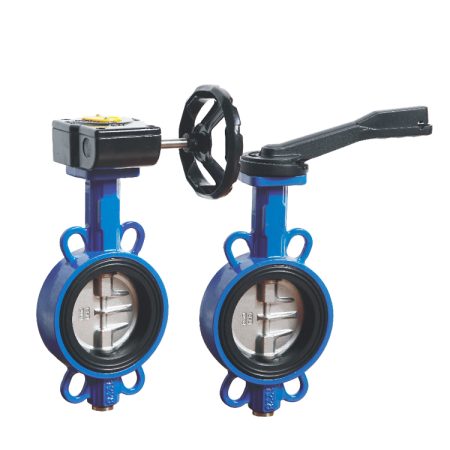
Lubrication
Lubrication is a critical aspect of butterfly valve maintenance maintenance that contributes to optimal valve performance and lifespan. Proper lubrication of the valve’s moving parts reduces friction, wear, and tear of the valve’s components. Lubrication also improves sealing capacity, thus minimizing leaks and enhancing the valve’s reliability. During maintenance, the type and amount of lubricant should be evaluated based on the valve’s operating conditions, size, and materials. The lubricant should be compatible with the valve’s components and the fluids it handles. Over-lubrication or under-lubrication of the valve should be avoided as these can affect the valve’s performance and potentially cause damage. Proper lubrication intervals should be established following the manufacturer’s recommendations and industry best practices. Lubrication maintenance should be documented to keep track of lubrication schedules, frequency, and quantities to ensure that the lubrication process remains consistent and optimal. Regular lubrication maintenance can improve the butterfly valve’s durability, reliability, and extend its service life.
Valve testing guidelines
Valve testing guidelines are designed to ensure that the butterfly valve maintenance maintenance meets specified performance criteria and adheres to industry standards. During testing, the valve should be tested to establish its pressure rating and seal tightness. The valve should be tested to ensure that it functions correctly through its entire range of motion and that it opens and closes fully without lagging, sticking, or any other issues. During testing, the valve should be examined for any leaks or other malfunctions that may affect valve performance. The valve testing should follow manufacturer’s guidelines and testing requirements based on industry standards such as API, ASME or ISO standards. Valve testing should be performed by qualified personnel and the testing procedures and results should be documented accurately for future reference. Following proper valve testing guidelines can ensure that the butterfly valve is in optimal working condition, and it can help minimize equipment downtime and maintenance costs.
Conclusion
In conclusion, regular inspection of pneumatic butterfly valves is essential to ensure optimal performance, prevent accidents, minimize downtime, and extend the valve’s service life. However, determining how often a butterfly valve should be inspected varies depending on factors such as operating conditions, industry-specific regulations, and the manufacturer’s recommendations. Generally, butterfly valves should be inspected annually or more frequently if the valve operates in an extreme environment or handles hazardous fluids. Frequent inspections help detect potential problems earlier, eliminating the need for costly repairs or replacement. An inspection plan should be developed and maintained for each butterfly valve, and all inspections should be documented to provide accurate data for maintenance analysis. It is essential to have trained personnel and appropriate equipment to perform inspections according to the manufacturer’s recommendations or industry standards. By following inspection guidelines properly, valve owners and operators can detect and address problems with their butterfly valves in a timely manner, preventing potential hazards and ensuring optimal valve performance. Therefore, regular inspection of butterfly valves should not be overlooked as it can potentially save lives, minimize environmental risk, reduce maintenance and replacement costs, and increase equipment efficiency.
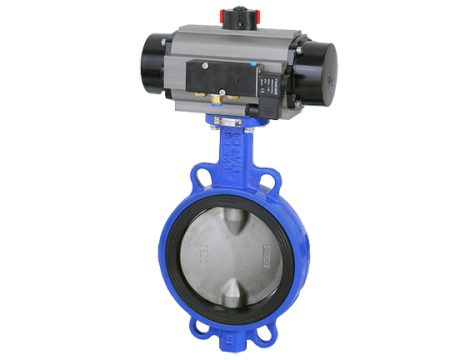
Recap of reasons for maintaining butterfly valves
To recap, there are several reasons why maintaining butterfly valves is crucial. Butterfly valve maintenance are responsible for controlling the flow of fluids, and as such, any malfunction can have severe consequences. Regular inspection and maintenance of butterfly valves can prevent accidents, minimize downtime, and extend the valve’s service life. Proper maintenance can also improve valve performance, reduce long-term costs, and increase equipment efficiency. Gaskets and seals are critical components that prevent fluid leakage, and regular inspection and replacement can ensure safe, reliable valve operation. Lubrication helps minimize wear and tear, enhancing sealing capacity and improving the valve’s reliability. Valve testing guidelines ensure the valve meets specified performance criteria, adheres to industry standards, and operates correctly through its entire range of motion. By maintaining butterfly valves properly, valve owners and operators can ensure optimal valve performance, prevent accidents, and minimize environmental risk.
Importance of regular inspection
Regular inspection is crucial for maintaining optimal butterfly valve maintenance performance and extending its service life. Frequent inspection helps detect problems earlier, reducing the need for costly repairs or replacement. During inspection, the valve’s critical components, including the body, disc, stem, packaging, and seals, should be evaluated for signs of wear, tear, or damage. Gaskets and seals should be examined for wear and cut, and the lubrication should be evaluated carefully to ensure the valve’s moving parts are adequately lubricated. Regular inspection can help prevent accidents, minimize downtime, and extend the valve’s service life, increasing the valve’s efficiency and reducing overall costs. Inspecting butterfly valves according to manufacturer’s recommendations, industry standards, and keeping accurate inspection records will help valve owners and operators take proactive steps to prevent problems before they occur, improving equipment efficiency and increasing equipment longevity. Regular inspection of butterfly valves is, therefore, an essential best practice for ensuring optimal butterfly valve performance.
Benefits of proactive maintenance techniques
Proactive maintenance techniques offer several benefits to butterfly valve maintenance owners and operators. By implementing proactive maintenance techniques, such as regular inspections, testing, and lubrication, potential problems can be detected and addressed before they escalate, ensuring optimal valve performance over an extended period. Proactive maintenance techniques increase equipment longevity, reduce downtime, minimize costs associated with repairs, and prevent accidents that can lead to environmental hazards or severe injuries. Additionally, proactive maintenance can increase equipment and operational efficiency, reducing energy consumption and maintenance-related costs. By establishing a preventive maintenance program and sticking to it, companies can reduce valve-related risks, improve equipment performance, extend the valve service life, and reduce overall costs. Ultimately, proactive maintenance techniques improve the reliability, safety, and efficiency of butterfly valves, ensuring optimal performance and making them a valuable asset to any operation.


